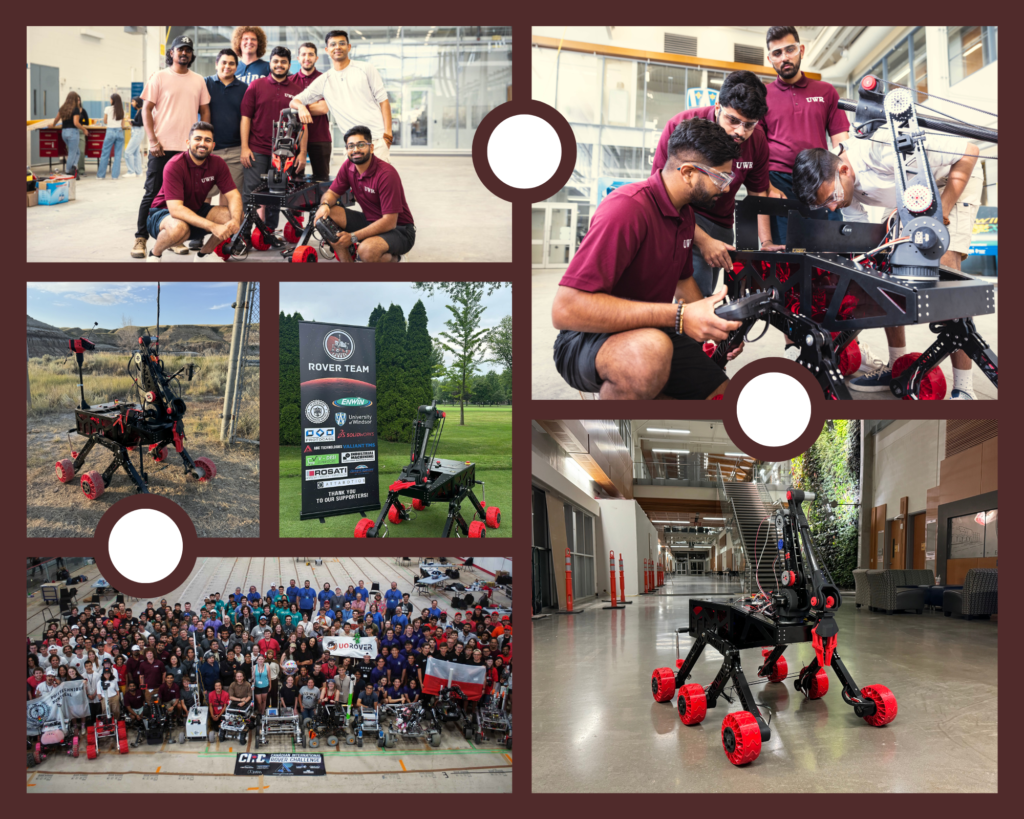Our Vision
The University of Windsor Mars Rover Team was founded by passionate 4th-year Electrical and Mechanical Engineering students from the graduating class of 2024 with a shared vision: to design and build a cutting-edge rover capable of competing in the Canadian International Rover Challenge (CIRC) and beyond. Fueled by a deep passion for robotics, space exploration, and hands-on engineering, the founding members dedicated their final year to bringing this project to life, overcoming technical and logistical challenges along the way.
Now, the 2025 team carries forward this ambition with a renewed commitment to innovation. Our goal is to develop a state-of-the-art rover from scratch, laying the foundation for future teams to build upon. By fostering a culture of collaboration and continuous improvement, we aim to establish a lasting legacy—one that will not only compete in CIRC but will also pave the way for future teams to enter the prestigious University Rover Challenge (URC), the world championship for student-built planetary rovers. Through dedication, ingenuity, and teamwork, we strive to push the boundaries of what’s possible and make a lasting impact on the field of robotics.

Canadian International Rover Challenge
Overview:
The Canadian International Rover Challenge (CIRC) is an annual robotics competition organized by the Canadian Space Technology Advancement Group (CSTAG). Founded in 2017, it has grown in scale and reputation, attracting university teams from around the world. The competition is held in Drumheller, AB where teams test their planetary rovers in a rugged, Mars-like terrain designed to simulate real-world space exploration challenges.
Who Competes?
• University students from around the world.
• Teams consisting of engineering, science, and robotics enthusiasts.
• Participants apply real-world problem-solving, teamwork, and interdisciplinary collaboration.
Next Competition: August 8-11, 2025
Location: Drumheller, Alberta
CIRC Tasks Summary

Arm Dexterity
Use the manipulator arm, sensor readings, and gripper to fuel, load cargo, and prep the shuttle for launch.

Boneyard Salvage Assessment
Navigate with GPS, identify components with camera, and check radiation using Geiger counter.

M&M
Use the camera and ArUco marker recognition for evidence scanning, and gripper to retrieve the weapon.

Reactor Maintenance
Operate the manipulator arm, monitor Geiger counter, and manage reactor criticality via sensor feedback.

Traversal
Navigate with GPS, identify markers with camera, and shelter with autonomy during the storm.
